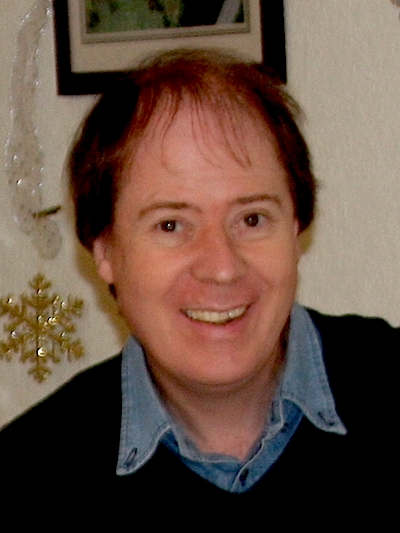Cambridge 7th to 9th September

Presenting Author:
Alex Hannon
<alex.hannon@stfc.ac.uk>
article posted 17 Feb 2015
Alex Hannon
I am employed at the Rutherford Appleton Laboratory, where I am responsible for the neutron diffractometer GEM (GEneral Materials). I am responsible for the experiments on GEM to study the structure of glasses, liquids and disordered crystals.
My personal research is into the structure of oxide glasses, such as germanate glasses, and chalcogenide glasses, such as arsenic sulphide glasses. As well as developing general techniques for studying glasses by neutron diffraction, I have particular interests in studies of the germanate anomaly, and of the hypothesised intermediate phase in chalcogenide glasses.
Together with colleagues in universities, I jointly supervise several PhD students studying the structure of glasses and disordered crystals. I am one of the organisers of the ISIS Neutron Training Course for PhD students.
I am the chairman of the international organising committee of the International Conference on Borate Glasses, Crystals, and Melts.

The Structure of Arsenic Sulphide Glasses:
Evidence for Tetrahedral Units?
Alex C. Hannon
ISIS Facility, Rutherford Appleton Laboratory,
Chilton, Didcot, Oxon OX11 0QX, U.K
Arnaud Cuisset, Pascal Masselin, Eugene Bychkov
2LPCA, UMR CNRS 8101, Université du Littoral,
189A ave Maurice Schumann, 59140 Dunkerque, France
Structural studies of arsenic sulphide glasses are described, with emphasis on the evidence for the presence of quasi-tetrahedral (QT) units, S=As(S˝)3, as has been proposed in studies of the intermediate phase in these glasses.
A series of AsxS1-x glasses (from 5 to 43% As) has been studied using neutron diffraction (ND) and Raman scattering. The ND results are interpreted using fitting and simulation methods, supported by DFT calculations. The interpretation of the Raman spectra is also supported by the DFT calculations, and comparison with the Raman spectra of Ge-S glasses.
The coordination numbers derived from ND are consistent with the conventional model for the structure of these glasses, in which all sulphur atoms are 2-coordinated, and all arsenic atoms are 3-coordinated, with a trigonal pyramid geometry, and with a strong preference for heteropolar As-S bonds. The observed neutron correlation functions are not consistent with a structure that involves a significant proportion of QT units.
 A Raman line at 495 cm-1 has been interpreted as arising from the stretch
mode of As=S double bonds, but the DFT calculations show that this mode arises
from S-S dimers. This is supported by the presence of the same line in the Raman
spectra of Ge-S glasses, which do not contain double bonds to sulphur. It is concluded
that there is no experimental evidence for the presence of QT units in As-S glasses.
A Raman line at 495 cm-1 has been interpreted as arising from the stretch
mode of As=S double bonds, but the DFT calculations show that this mode arises
from S-S dimers. This is supported by the presence of the same line in the Raman
spectra of Ge-S glasses, which do not contain double bonds to sulphur. It is concluded
that there is no experimental evidence for the presence of QT units in As-S glasses.
